Are you ready for changes coming in the next decade?
How to cause the necessary changes will be up to the farm management and staff.
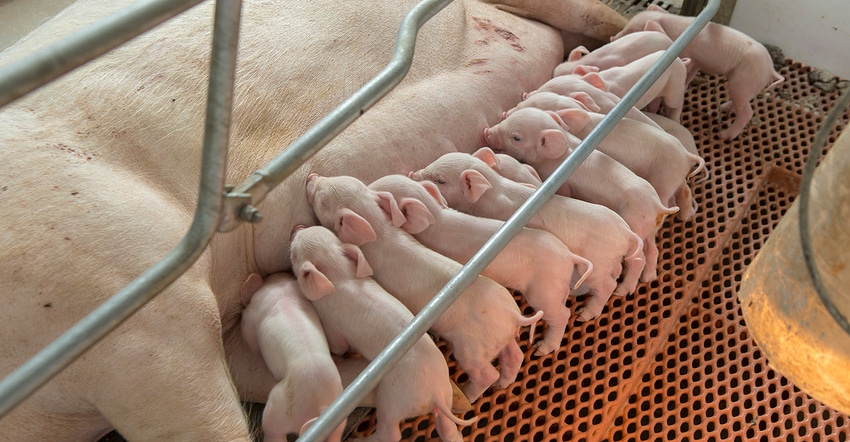
First let's review the last decade. It is the time of the year when you are printing W-2s and it is easy to calculate the employee replacement rate. Take the number of W-2s printed by the number of full-time equivalent positions you have. If the number is higher than your gilt replacement rate, you have a problem.
It was always the Swine Management Services' philosophy to hire good people and give them the authority to do their job, do not micromanage. That leads into employee training. With the high turnover in the swine industry, who is training the new employees? Is it the person you hired last week? It would be a good time to update your standard operating procedures and make sure that all of the employees know what they are. There are also several new companies that are offering online employee training.
Over the past two decades we have seen multiple diseases emerge and very few have an effective treatment program. There are already new diseases or strains that are emerging this year. Everyone should review their biosecurity protocols, strengthen them and make sure every employee knows this is Job 1. The only effective way to treat most diseases is to prevent them in the first place.
When we started SMS in 1994 and were putting together business plans projecting 22 pigs weaned per mated female per year, people thought we were crazy, but every farm we started out performed the projections. We started SMS Farm Benchmarking in January 2005 and it was not until July of 2005 that the SMS Farm Benchmarking moved the average above that number. In January of 2005, pigs weaned per mated female per year was 21.2 and the top 10% were over 24.8 pigs weaned per mated female per year.
Chart 1 shows that we have moved the "all" average number to 26.6 pigs weaned per mated female per year with the Top 10% more than 32 pigs weaned per mated female per year. This is a 25% improvement for the "all" average farm and a 29% improvement for the Top 10% over the 15 years we have been doing the SMS Farm Benchmarking.
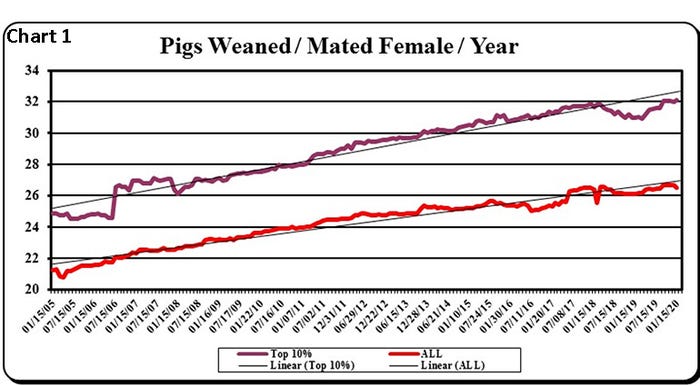
Chart 2 shows the improvement in total born per female farrowed. In 2005, the average for "all" was 11.6 and the Top 10% were 12.4. In 2020, the "all" average was 14.9 and the Top 10% were 15.9. This is a 29% increase for both numbers. The Top 10% also went up 29% on pigs weaned per mated female per year, but why did the "all" average farm only go up by 24% on pigs weaned per mated female per year? Did they fail to anticipate the changes? Did they fail to make the necessary changes in their SOPs to handle the larger litters?
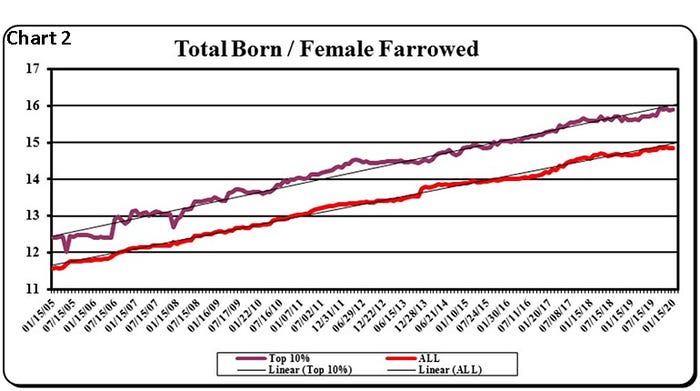
Piglet survival is a calculation we created in 2005 to compensate for the various definitions for stillborn and pre-weaning mortality and the poor recordkeeping on the farms. We have found since then that over half of the stillborns are live born pigs if the farrowings are attended. Chart 3 shows the percent stillborns. The "all" average has gone from 8.2% in 2005 to 6.8% 2020 for a 16.8% improvement, while the Top 10% have gone from 6.7% in 2005 and 5.7% in 2020 for a 15.8% improvement. Pre-weaning death loss in Chart 4 shows the "all" average has gone from 13.4% to 14.9 % for an increase of 11.1% and the Top 10% have gone from 11.1% to 10.0% of a decrease of 9.6%.

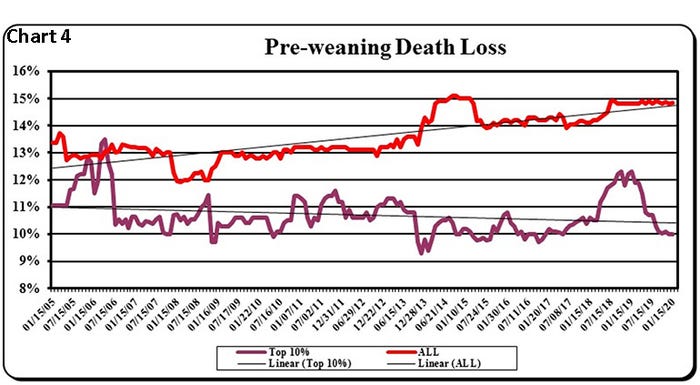
Again, piglet survival (Chart 5) is a term and calculation we created in 2005 that combines stillborn and pre-weaning mortality into one number. The "all" average has gone from 79.1% in 2005 to 78.3% in 2020 for a decrease of 1% and the Top 10% have gone from 82.2% in 2005 to 84.3% in 2020 for an improvement of 2.6%.
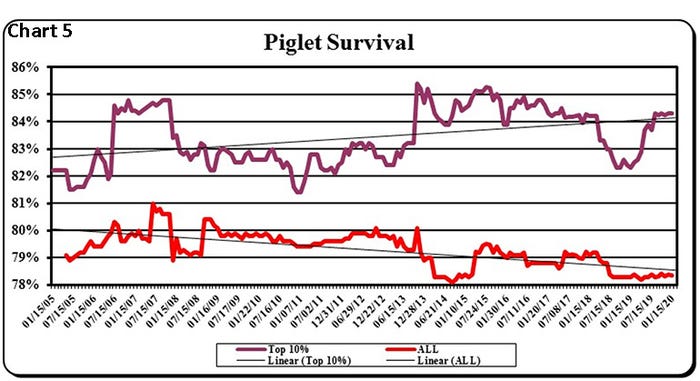
Change is evitable and how you adapt to the change will determine your success in the future. In the book "The Goal" by Eliyahu M. Goldratt he asked three questions.
What to change?
What to change to?
How to cause the change?
Through our SMS Farm Analysis program and consulting we try to answer the first two questions. How to cause the change will be up to the farm management and staff. The Top 10% have adapted and changed to handle the larger total born and are weaning a higher percent of the pigs in 2020 than they were in 2005.
What production numbers does your farm need to change? What are you plans and updated SOPs for 2020 to improve those numbers? Let us know if we can be of help?
Table 1 provides the 52-week rolling averages for 11 production numbers represented in the SMS Production Index. The numbers are separated by 90-100%, 70-90%, 50-70%, 30-50% and zero to 30% groups. We also included the 13-week, 26-week and 12-quarter averages. These numbers represent what we feel are the key production numbers to look at to evaluate the farm's performance.
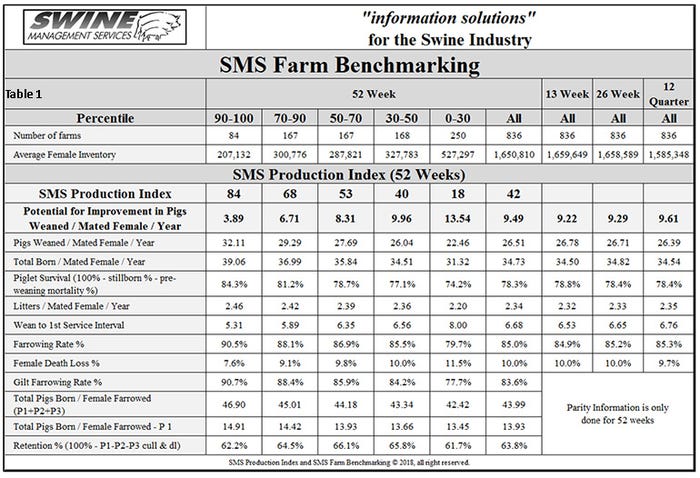
At SMS, our mission statement is to provide "Information solutions for the swine industry." We feel with the creation of different SMS Benchmarking databases for all production areas we now have more detailed information to share with the swine industry.
If your farm would like to be part of the SMS Benchmarking databases, or if you have suggestions on production areas for us to write columns about, email Mark Rix or Ron Ketchem. We enjoy being a part of the National Hog Farmer NHF Daily team. Previous columns can be found at NationalHogFarmer.com.
Sources: Ron Ketchem and Mark Rix, who are solely responsible for the information provided, and wholly own the information. Informa Business Media and all its subsidiaries are not responsible for any of the content contained in this information asset.
About the Author(s)
You May Also Like



